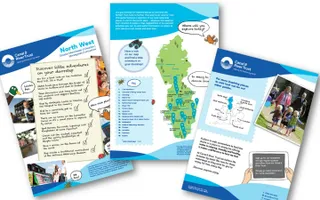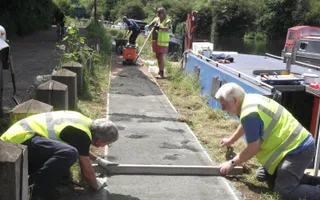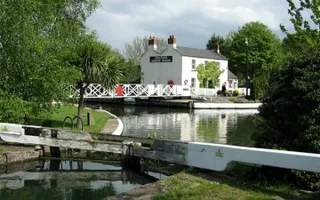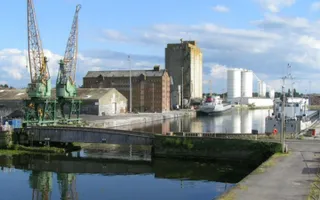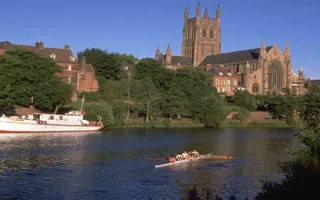The Gloucester & Sharpness Canal was once the broadest and deepest in the world. Even today, it stands out from other navigations because of its sheer scale and impressive engineering.
Its immense swing-bridges and ornate bridge-keepers' houses add to its unique identity. It connects Gloucester to Sharpness, allowing boats to bypass a treacherous stretch of the River Severn. From the canal, there are spectacular views of the Severn Estuary, the Forest of Dean and the Cotswolds.
The tidal parts of the Severn are alive with wildlife, especially coastal birds. At Slimbridge, the headquarters of the Wildfowl and Wetlands Trust, vast flocks of thousands of migrant birds visit each winter.
Days out near Gloucester
At Gloucester Docks, you can get a real sense of the canal's cargo-carrying heritage. Listed warehouses have been converted into shops and leisure facilities, and the marina is still busy with boats. The National Waterways Museum Gloucester tells the story of the canal and has a fascinating collection of historic boats.
The history
The River Severn was especially treacherous below Gloucester. In 1793 Midlands industrialists together with merchants and other influential residents of Gloucester obtained an Act to construct a ship canal between Gloucester and Berkeley to bypass this bottleneck. Sea-going ships would be able to reach Gloucester — with the hope that in time it would rival Bristol in importance — and raw materials could more easily be imported to the Midlands and finished goods exported, reducing costs.
By the end of the decade only five miles of the canal, as far as Hardwick, had been completed. The problems seemed insuperable: disputes with landowners; dissatisfaction with their principal engineer, Robert Mylne (better known as an architect); complaints about their resident engineers; rising prices because of the French wars and competition for labour from the other canals then being built; exceptionally bad weather; problems getting subscribers to pay the calls on their shares; and so on.
There matters remained until 1816, when it was agreed that the canal should be routed less far inland, with its terminus to the east of the point at Sharpness, a couple of miles short of Berkeley. Finance was obtained from the Exchequer Bill Loan Commissioners, an organisation set up to give loans for public works at commercial rates of interest with the aim of reducing unemployment. The Commissioners' engineering advisor was Thomas Telford, and thereafter he acted as consultant to the canal company.
A true ship canal
The canal opened in 1827 — at 86ft 6in wide and 18ft deep, taking craft of 600 tons (with maximum dimensions 190ft long and 29ft wide), it was the biggest canal in England, a true ship canal. During the following decades, several large warehouses and a dry dock were built at Gloucester. The debt to the Commissioners was eventually repaid in 1850, though dividends were not paid until the 1860s.
With the increasing size of ships, particularly steamers, the entrance at Sharpness was seen to be inadequate. A new entrance and dock was opened in 1874. New warehouses were erected, both at Sharpness and Gloucester. Further improvements were made at Sharpness in the 1890s.
The docks and canal continued busy through to the 1960s, an important new cargo being oil and petroleum. However, as had always been the case, imports considerably exceeded exports. Sharpness docks are still active, though there is now little commercial traffic on the canal itself.
Where does the water come from?
The 16.5 mile Gloucester & Sharpness Canal, constructed from 1794, runs close to the upper tidal reaches of the River Severn. There are two main water sources for the canal; local rivers and streams (called feeders) and Gloucester pumps. From December to Easter the Gloucester & Sharpness Canal is mainly supplied with water from feeders. The two most significant of these feeders, are the River Frome at Saul Junction and the River Cam near Slim bridge.
Water is pumped up two metres from the River Severn into the canal at Gloucester Docks, especially during summer and autumn. Pumping water is expensive - about £10,000 a year at Gloucester.




